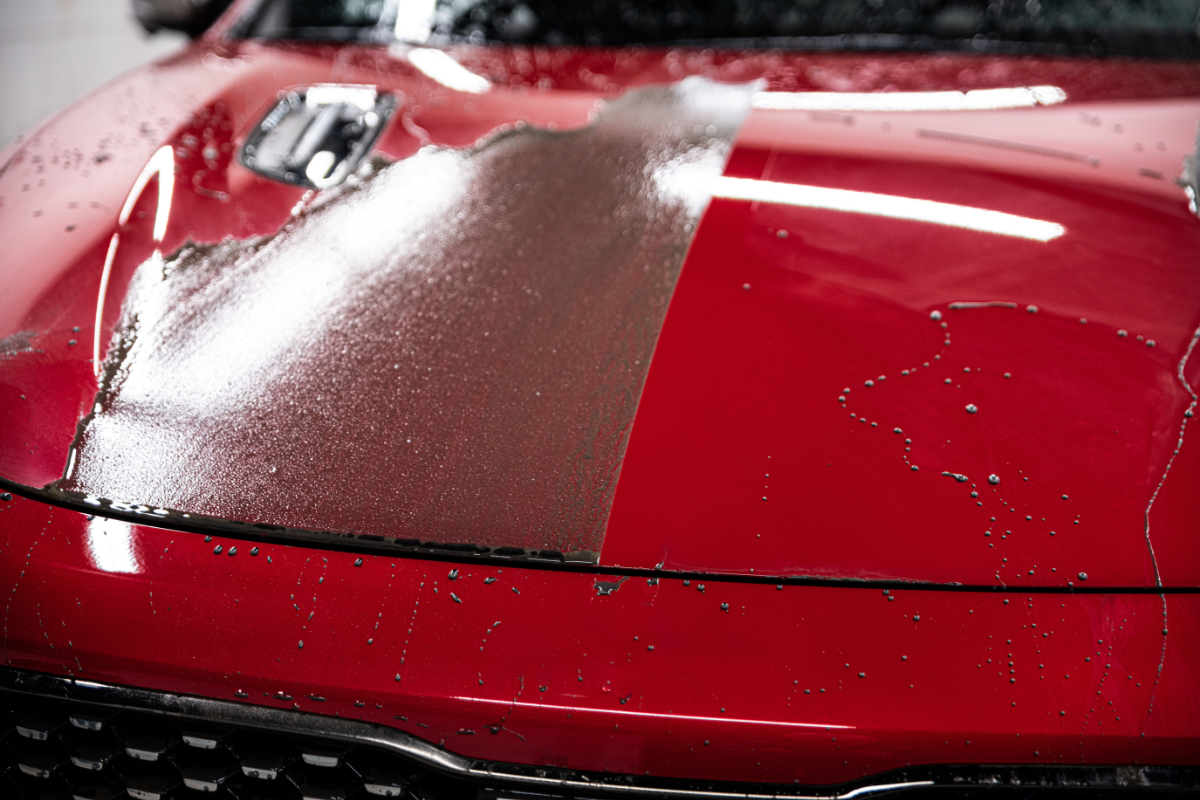Premium Ceramic Coatings San Jose for Ultimate Automobile Defense
Wiki Article
Introducing the Scientific Research Behind Ceramic Coatings: How Does It Work and Why Is It Above Typical Choices?
Ceramic coverings have been acquiring popularity in different markets for their remarkable efficiency and longevity. The science behind these coverings exceeds simple surface area defense, diving right into the detailed chemistry that makes them stand out from traditional choices (ceramic coatings san jose). Comprehending how ceramic finishes work and why they outperform conventional alternatives is essential for those seeking to enhance the longevity and durability of their materials. What specifically establishes ceramic layers apart, and just how do they attain such exceptional outcomes?The Chemistry of Ceramic Coatings
In understanding ceramic layers, diving into the detailed chemistry behind their structure is essential for realizing their performance and resilience. Ceramic coatings are mostly composed of silicon dioxide (SiO2), which creates a safety and strong layer when used to various surface areas. This chemical structure gives outstanding resistance to heat, chemicals, and deterioration, making ceramic coverings very sought after for a wide variety of applications.The chemistry behind ceramic coatings includes the development of covalent bonds between silicon and oxygen atoms, creating a stiff network that enhances the finish's strength and durability. Furthermore, the presence of various other components such as aluminum, titanium, and zirconium additional improves the coating's properties, supplying enhanced firmness and attachment to surface areas.
Understanding the chemical structure of ceramic coatings enables the personalization of solutions to match specific needs, whether it be for automobile, commercial, or property objectives. By harnessing the power of chemistry, ceramic coverings remain to lead the method for premium defense and efficiency in numerous markets.
Benefits of Ceramic Coatings

As an outcome, ceramic coatings make cleaning and preserving surface areas a lot less complicated and less time-consuming. Generally, the plethora of benefits provided by ceramic finishings make them a premium option compared to standard layer methods.
Exactly How Ceramic Coatings Bond
Ceramic coatings bond to surfaces through a procedure that includes molecular bond and chemical interactions. When a ceramic covering is used to a surface area, it develops a strong bond by chemically adhering to the surface area at a molecular degree.Additionally, the chemical interactions between the ceramic coating and the surface area better improve the bond. ceramic coatings find out here now san jose. These interactions allow the ceramic layer to develop a smooth and continuous layer externally, offering excellent defense and toughness. Unlike standard coverings that may remain on the surface without totally bonding, ceramic finishes produce a permanent bond that is immune to chemicals, UV rays, and severe ecological problems

Essentially, the bonding system of ceramic finishes makes sure a reliable and lasting protective layer that outmatches standard covering alternatives. This remarkable bond adds to the longevity, scratch resistance, and long life of ceramic finishings, making them a preferred selection for numerous applications.
Resilience of Ceramic Coatings
The remarkable longevity of ceramic finishes stems from their robust molecular bond and chemical communications with surfaces, ensuring a sturdy safety layer that surpasses typical covering options. Once used, ceramic finishings form a solid bond with the substratum, creating a durable obstacle versus various ecological stressors such as UV radiation, chemicals, and abrasions. This bond is so safe that it can withstand the rigors of everyday usage without deteriorating or deteriorating promptly.Unlike conventional finishings that might break down over time, ceramic finishes maintain their stability for an extended period, supplying lasting defense for the underlying surface area. In general, the extraordinary durability of ceramic layers makes them an exceptional selection for shielding a wide array of surfaces in different applications.
Ceramic Coatings Vs. Standard Choices
In contrast to standard layer approaches, ceramic layers offer a distinctive blend of longevity and protective capabilities that set them apart in different surface area defense applications. Conventional alternatives such as wax or sealers offer a short-term layer of security that can use off swiftly, calling visit site for frequent reapplication. On the other hand, ceramic coverings form a strong bond with the surface, creating a long-term or semi-permanent barrier that is highly resistant to abrasion, chemicals, UV rays, and extreme temperature levels.
In addition, ceramic coatings use superior hydrophobic residential properties compared to typical finishings. The hydrophobic nature read this article of ceramic finishings triggers water to grain up and roll off the surface area, lugging dust and impurities with it. This self-cleaning impact aids to maintain the surface's tidiness and gloss for extensive periods, decreasing the demand for constant maintenance.
Furthermore, ceramic layers have a thicker layer compared to standard alternatives, offering improved scratch resistance and defense against small influences. This resilience guarantees resilient efficiency and assists preserve the aesthetic allure of the dealt with surface area for a prolonged duration.
Final Thought
Finally, the scientific research behind ceramic finishings depends on their chemical make-up and bonding homes, making them superior to conventional options. The advantages of ceramic coatings include increased toughness and defense for surfaces. By recognizing just how ceramic layers work and their benefits over traditional options, one can make enlightened decisions when considering finish options for various applications.Unlike standard coatings that may sit on the surface area without completely bonding, ceramic layers produce an irreversible bond that is resistant to chemicals, UV rays, and rough ecological conditions.
The remarkable durability of ceramic finishes stems from their durable molecular bond and chemical interactions with surfaces, guaranteeing a long lasting protective layer that goes beyond conventional finishing options.Unlike traditional finishes that may weaken over time, ceramic finishings keep their honesty for an extended duration, providing long-lasting security for the underlying surface area.In comparison to standard layer techniques, ceramic coatings supply a distinctive blend of toughness and safety abilities that set them apart in numerous surface area protection applications. By comprehending just how ceramic layers work and their benefits over conventional alternatives, one can make informed decisions when thinking about finishing alternatives for various applications.
Report this wiki page